The dismal state of Britain’s rivers: An interactive map shows how polluted your local waterway is – experts warn almost a quarter are in poor or poor condition
From the Thames to the Severn, Britain is home to some of the most beautiful rivers in the world.
But while these waterways may look beautiful, many of them hide shocking levels of pollution.
A new interactive map from the Rivers Trust reveals the ‘desperate’ state of Britain’s rivers – with no stretch in England in ‘good’ or ‘high’ condition.
Some forms of pollution are clearly visible from the riverbank, such as plastic bottles floating in the water and wet wipes tangled in overhanging vegetation.
But appearances can be deceiving, because even the clearest water contains microplastics, fertilizers and even pharmaceutical products.
This shocking interactive map of Britain shows how our country’s waterways have fallen into a ‘desperate’ state of health
The interactive map shows the ecological health score of each stretch of British river.
This score broadly looks at what lives in the river and how the waterway has been changed by humans.
Overall, the Rivers Trust notes that the absence or abundance of species is a good indication of the overall health of the river.
These scores are rated on a scale from high, shown in dark blue, to poor, shown in red.
As you can see from the large amount of red on the map, the majority of UK waterways are in an ecological status of fair or worse.
If you zoom in, the map reveals even more details.
For example, you can see that almost every part of the river around London is rated as fair or worse, with a few sections – including those between Egham and Teddington – rated as poor.
In northern England, a number of wetlands in the Peak District retain their ‘good’ rating, while the waterways around Manchester, Liverpool and Nottingham are largely moderate or worse.
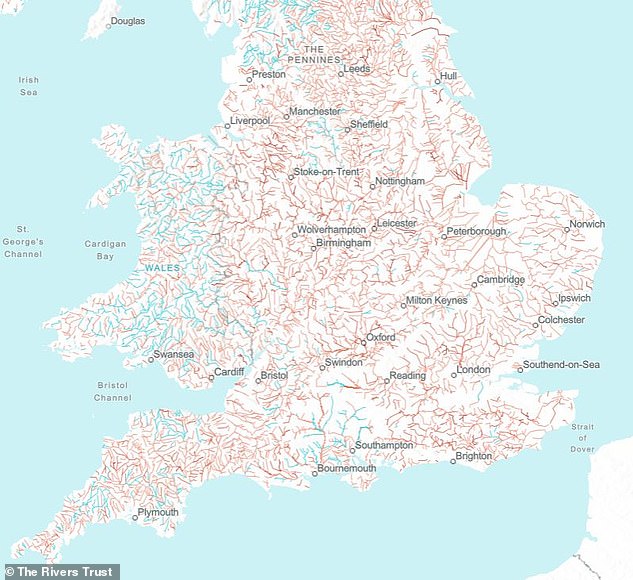
The waterways marked in red all do not score well or high in terms of environmental health. Areas around London and the Midlands all score poorly, while Wales has much healthier waterways
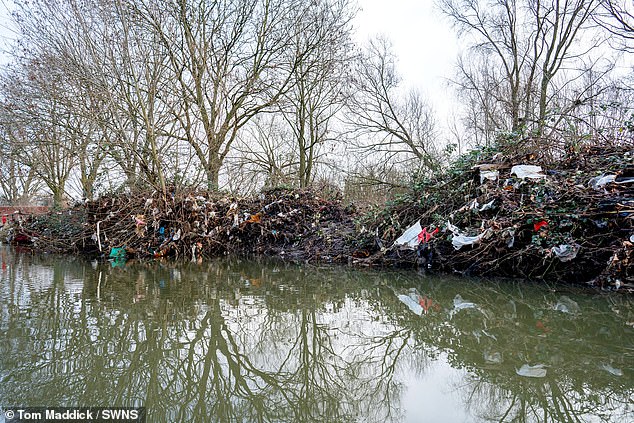
This image shows litter in the River Soar in Leicester following the January floods. The Rivers Trust points out that no English waterway scores well or highly for overall health
In terms of ecological health, the rivers of Scotland, Wales and Ireland all fare much better than England’s waterways.
Large parts of Wales and Ireland are highlighted in blue, reflecting stronger biodiversity in these areas.
To find the nearest waterway, click on the search bar in the top left corner of the map.
If you enter the first few letters of your city, town or street, suggestions will appear in the drop-down list below for you to select.
Clicking on these options will center the map on that location so you can find the nearest waterway.
For more information, simply tap on the river you want to know more about.
This way you know when the last ecological research took place and how the waterway scored.
For an even more detailed analysis, you can follow the link to the Catchment Data Explorer to learn more about the levels of invertebrates and chemicals in the water.
The Rivers Trust’s ‘State of our Rivers Report’ examined the ecological and chemical health of Britain’s waterways to give each body of water a combined health score.
Of the 3,553 rivers in England, none achieved a combined score of good or high for health, and no river in Ireland did either.
However, in Scotland, 57 percent of rivers achieved good overall status, as did 44 percent in Wales.
The report comes as the government seeks to create 26 new swimming venues in England to cater for the growing popularity of outdoor swimming.
The sites would see increased water monitoring and a greater focus on investigating sources of pollution from water utilities and agricultural sites.

In the north of England there were some rivers in good health around the peak district, but around the major cities the rivers are mainly rated as fair or worse
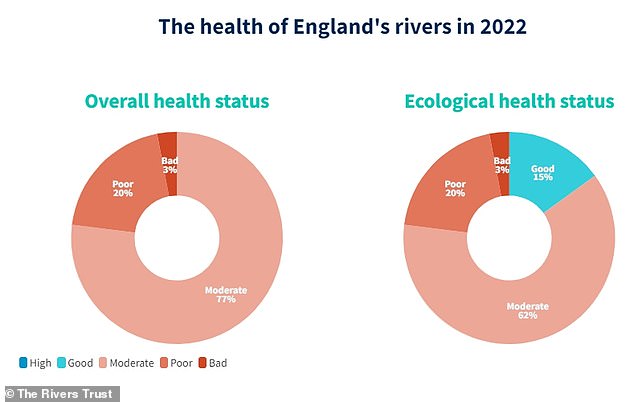
All English rivers are failing in terms of chemical health and only 15 per cent are in good ecological status, the report warns.
Mark Lloyd, chief executive of the Rivers Trust, warned that the findings were “dishearteningly similar” to the organization’s first study published for England three years ago, which used previous data from 2019.
“We haven’t seen dramatic improvements, and the same problems are still there,” he said.
“Despite all the announcements, initiatives, press releases, changes of ministers and the like, we have not seen any movement of the needle on the health status scale that shows that our rivers are in a desperate state.”
Between 2019 and 2022, 151 sections of the river improved and an ecological standard rose, but 158 became even worse.
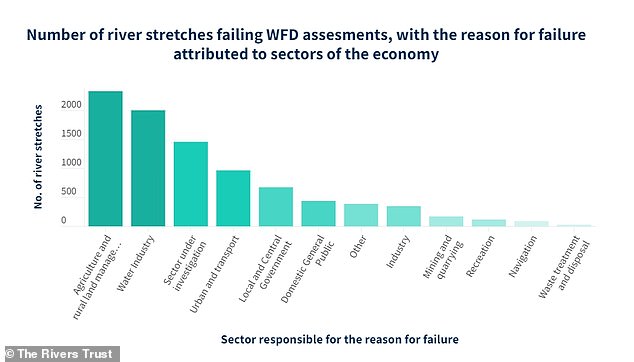
The report is based on data collected under the 2022 Water Framework Directive and additional datasets for some areas
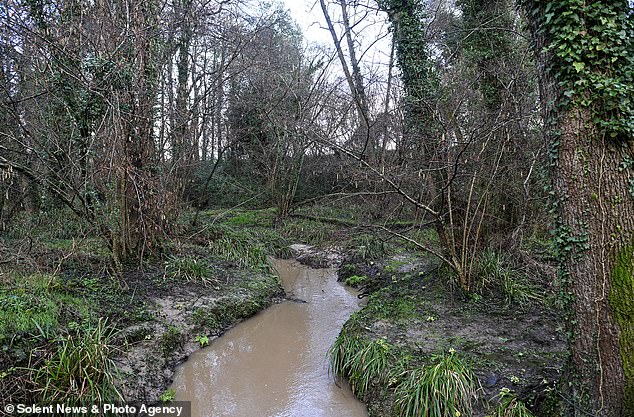
At Shawfords Lake Stream (pictured), untreated sewage killed more than 2,000 fish after a pump failed for 19 hours
As to why so many waterways in England failed to achieve good ecological status, the Rivers Trust cited three main reasons.
Of all the rivers that failed the ecological tests, 62 percent failed due to factors related to ‘agriculture and rural management’, mainly involving nutrient runoff from fertilizers and livestock.
The ‘water industry’ and its sewage disposal caused 54 percent of the rivers to fail and 26 percent due to the discharge of transport pollutants such as oil from the roads.
However, the data also revealed some ‘worrying’ gaps.
Of the rivers that failed, 39 percent had a failure that is unknown and currently under investigation.
Similarly, Rivers Trust also revealed that river sampling has declined, with almost 6 percent fewer people receiving a health rating compared to 2019.
To find out more about the impact of sewage on your local waterway, you can also use the River Trust’s interactive map below.
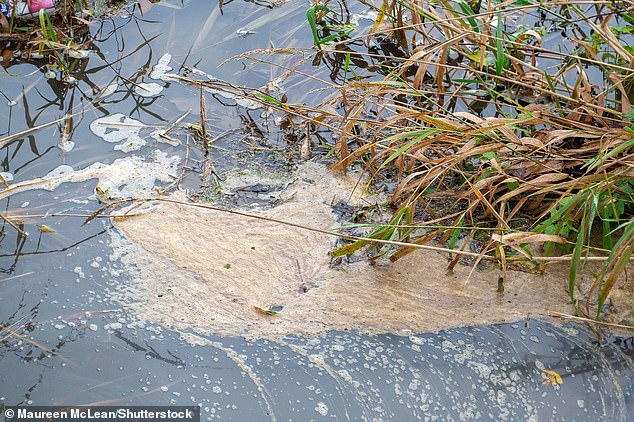
Sewage has been a major contributor to rivers’ failure to meet ecological targets. Here in Old Windsor, Berkshire Thames Water has been dumping sewage into the Thames for more than five hours
The data also shows that every river in England failed to meet chemical health standards.
But when the Environment Agency came to study rivers in 2019, they gave each stretch of river a ‘Does Not Require Assessment’ status.
This is because every river failed in 2019 when the Environmental Agency began testing for a group of chemicals called uPBT, which stands for ‘ubiquitous, persistent, bioaccumulative and toxic’.
Because these chemicals remain in waterways for decades, it is simply assumed that the chemical health of the water will remain poor.
